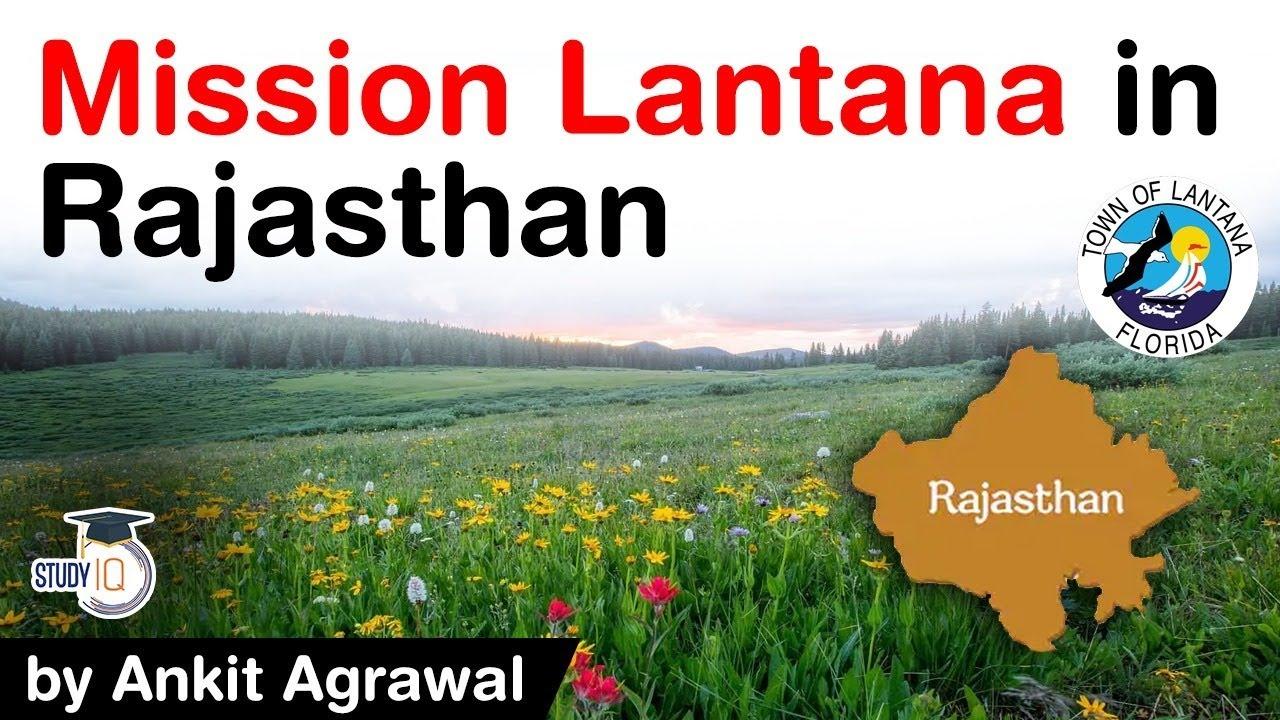Table of Contents

- A special drive to uproot the invasive lantana bushes in the famous Sajjangarh wildlife sanctuary in Rajasthan’s Udaipur district has helped in ecological restoration of grasslands and saved biodiversity.
- The month-and-a-half-long campaign was accompanied by the plantation of native species on the cleared patches of land.

The problem
- The small sanctuary in the southern Aravalli hills, spread over 5.19 sq. km, is home to a large number of herbivores.
- Lantana camara, a thicket forming shrub, has covered vast tracts of land in the sanctuary, stopping the natural light and nutrition for flora and fauna.

- The toxic substance in its foliage and ripe berries affected the animals, while its expansion stopped the natural growth of grass and other shrubs.
- With the herbivores not getting sufficient forage, the prey base for carnivorous animals was declining, leading to ecological disturbances in the food chain.
About Mission Lantana
- The “mission lantana” was taken up last month at the instance of a senior woman police officer who noticed An unease among the herds of spotted deer with the gradual shrinking of their natural habitat.
- Inspector General of Police Binita Thakur discussed the matter with wildlife experts and initiated action to get rid of lantana bushes, which had taken over almost 50% of the sanctuary.
- The drive involved collective efforts and ‘shram daan’ (voluntary physical work) by the forest officials, police personnel, wildlife lovers, representatives of voluntary groups and local villagers.
- The volunteers used hand gloves and an equipment, monkey jack, for removing the toxic flowery shrubs.
- After 45 days, about 10 hectares of land has been cleared.
- The Forest Department, which has planted over 500 saplings in the cleared pockets,
- Plans to take up sowing of grass and a variety of alternate plant seeds as the vegetation useful for herbivores.
But how this invasive bush entered?
- Lantana, first introduced in 1807, had spread to wildlife reserves, river banks and the Project Tiger areas where it had obliterated native grass and reduced biodiversity.
- In some regions, the plant has made inroads into pastures and shrunk the cattle grazing areas, affecting the livelihood of villagers.
- The aquatic biodiversity of Kerala has been threatened by the invasive species, North African Catfish.
- It was introduced all over the world during the 1980s for aquaculture purposes.
Is the mission, a permanent solution?
- Udaipur-based environmentalist Satish Sharma told that
- The drive should be taken up in the rainy season for the next three to four years to make a
- permanent impact.
- “The correct ecological approach would be the removal from top to bottom in hilly areas and centre to periphery in the plains.”
Q) Which of the following statements regarding Biodiversity is correct?
- Biodiversity is normally greater in the lower latitudes as compared to the higher latitudes.
- Along the mountain gradients, biodiversity is normally greater in the higher altitudes as compared to the lower altitudes.
- 1 only
- 2 only
- Both 1 & 2
- None of the above
Latest Burning Issues | Free PDF






















 WhatsApp
WhatsApp